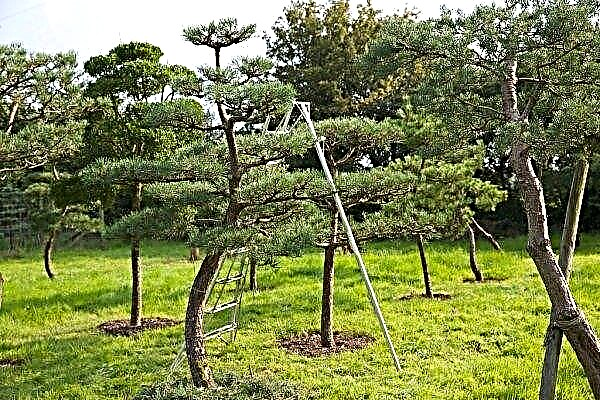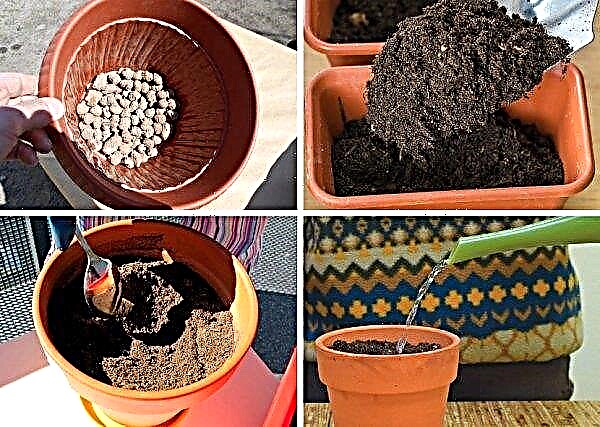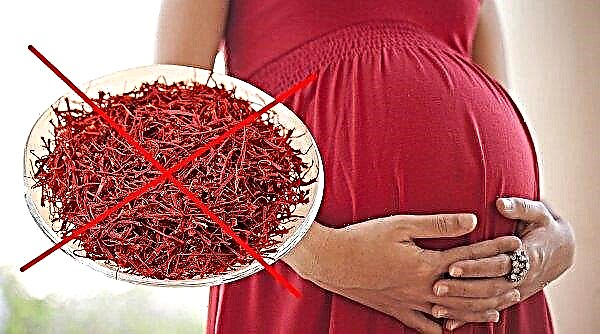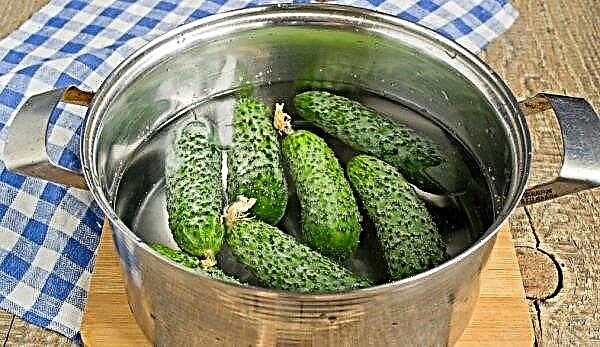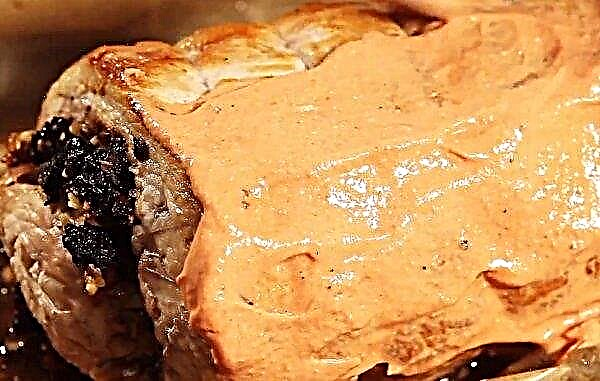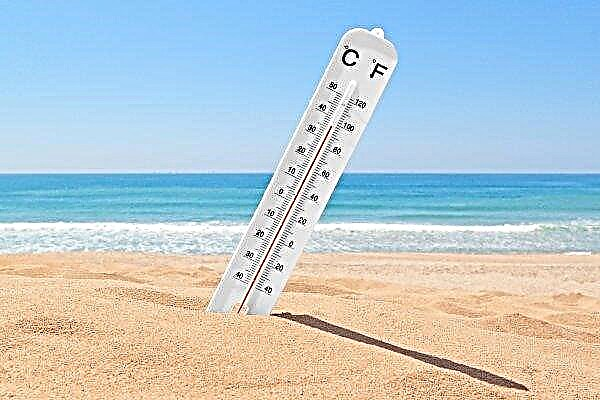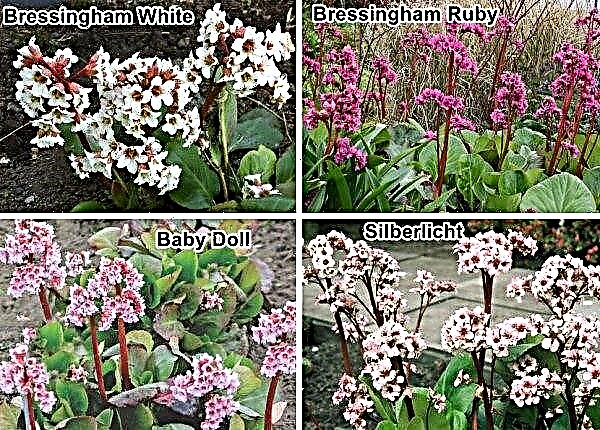Mushroom cultivation is a unique type of gardening, still little cultivated in summer cottages, and champignons are the easiest and most convenient option for this process. Although the cultivation of mushrooms may not be as usual as the cultivation of other types of garden crops, but it is easy to do - this will be discussed in the article.
Preparing planting material
Before starting the cultivation process, it is worth getting acquainted with the basic concepts of the physiology of fungi and methods of their reproduction.Mushrooms have mycelium - this is the part of the fungal organism that is not visible on the surface. Like the roots of a tree, the mycelium provides nutrition and is necessary for the growth of the mushroom structure. These are long, thin, filamentous formations that spread beneath the surface of the earth.
Mushrooms propagate by spores (translated from Greek - “seed”), which ripen under a hat and, falling into the soil, germinate in a monocaryotic mycelium. Monocaryotic means that mycelial chromosomes are unpaired. To grow fruiting bodies and create a full-fledged organism, two monocaryotic mycelia combine, turning into a dicariotic mycelium, which produces mushrooms on the surface of the earth. It spreads over large areas, so mushrooms are considered the largest organisms on the planet.
Often forest mushrooms grow in close connection with trees and form mycorrhiza, but champignons are an exception, and therefore they can be bred in a garden.
The main requirements for growing champignons in garden plots are:
- creating the right conditions, close to natural;
- the acquisition or creation of mushroom planting material, which is used for the propagation of mushrooms.

Store selection
Champignons are a common form of mushroom growing. Planting stock can be purchased in the form of ready-made kits through online stores or in local nurseries. Kits usually contain all the materials necessary for planting and growing champignons, they are environmentally friendly, ready to use and great for beginners.
Important! Kits for growing, as a rule, have certain directions (types of mushrooms, requirements for conditions, composition of the kit), which may differ from the traditional methods of agrotechnics of mushrooms. Be sure to carefully read the package description and follow the instructions.
This includes:
- a bag of compost seeded with champignon mycelium;
- a package with a coating mixture;
- trays;
- instruction.

Grow yourself
It is more difficult to grow mycelium on your own at home. This will require knowledge of microbiology. It is possible to make sure that everything is done correctly and the mycelium of champignon, and not another microbiological culture, is grown only after the appearance of fruiting bodies. The process should take place under sterile conditions, in the presence of a nutrient medium, special equipment, in certain temperature conditions, which are easier to create in the laboratory than in the kitchen.
Did you know? Mushrooms used to belong to plants and were studied by the botanical sciences. Now there is a separate section of biology - mycology: this is the science of fungi and mushroom-like organisms.
There is another way to grow mycelium directly in the garden:
- To do this, you need to throw waste of cleaning and processing or fresh ripe champignons with open hats and dark subcapsule plates in the selected area among the grass.
- Then you should cover the place with old boards, fallen leaves or branches, trying to avoid getting excessive moisture.
- Mature spores will fall into the ground and give rise to the growth of the mycelium, which will spread underground and lay a productive mycelium.

With this method, in the case of successful reproduction, you get the mycelium of champignons.Self-cultivation of mycelium is a long and painstaking process that is associated with failure, so you can do this in terms of research and experience, and for growing on a garden plot it is better to purchase ready-made planting material.
Preparing the landing site
The traditional method is the cultivation of mushrooms on composted manure, so the site must be prepared before planting mycelium in open ground.
In the open ground
Champignons need constant humidity (but not swampiness) and indirect sunlight. Based on this, you can find places for their cultivation within the garden - abandoned lawns, compost heaps, shady, cool and ventilated (but without drafts) plots that are not suitable for cultivating a garden and growing vegetables. It may even be a place under the porch of the house, the northern side of the courtyard buildings.
Champignons grow better in alkaline soils rich in organic matter (especially nitrogen). Regular soil does not provide the right nutrients for growing mushrooms. Instead, materials such as like litter from chopped straw, sawdust, wood shavings, compostwhich are called a substrate.
A mixture of equal parts of compost and horse manure, which provides the mushrooms with a nitrogen-rich environment, is well suited as a nutritional composition for mushrooms.
Landing
You can plant mycelium from the beginning of spring to the end of summer, trying to shade the beds at high summer temperatures.
Important! Do not use chemical fertilizers, as mushrooms will not grow in such conditions.
The sequence of actions during landing can be represented as follows:
- Mushroom beds do not look like the usual areas for vegetables - this is not a hill, but depressions (30 cm), laid out by a drainage layer, on top of which the substrate is placed and rammed.
- Plant mycelium evenly, distributing it over the entire surface of the compost, and then sprinkle with water. Try to make an even layer on the substrate so that the mushrooms grow in all parts of the soil.
- Sprinkle on top of the bed with a coating mixture from a set or peat mixed with chalk in a 4: 1 ratio, a layer of 2-3 cm. Instead of peat, you can use garden soil or shredded waste paper, but be sure to add chalk or dolomite chips to ensure alkaline characteristics of the composition.
- The period of active growth takes about 2-3 weeks. During this time, the substrate will be colonized with white filaments of mycelium to a depth of 1 cm.

To activate growth and fruiting, faster ripening of fruiting bodies and improve their quality, it is recommended to treat the substrate with Epin mycelium (0.005 ml / m²) before planting and at the beginning of each fruiting wave. This provides earlier fruit formation (by 4-6 days) and increases yield by 20%.
Growth Care
After planting mushroom material, subject to all conditions for germination, the first small heads of mushrooms appear in 3-4 weeks. This is the beginning of a future harvest. After 7-10 days of growth, the mushrooms are ready for harvest.
The mushroom bed requires stable environmental conditions, which is not easy to maintain in open areas. To establish a stable temperature regime and the necessary humidity, protect the mycelium from drying out with a simple shelter from the film. Every day you need to irrigate the soil with light spraying and cover the area with a damp cloth. Instead of fabric, you can use regular newspapers that moisturize daily. For mushrooms to grow, the medium must be constantly moist. Newspapers can be removed when the mushrooms begin to form. In the first week before irrigation, loosening to a depth of 1 cm is carried out with a wooden plank with rare teeth to remove excess carbon dioxide and increase fruit production.
In the first week before irrigation, loosening to a depth of 1 cm is carried out with a wooden plank with rare teeth to remove excess carbon dioxide and increase fruit production.
Mushrooms continue to grow as long as there is enough organic matter in the soil for nutrition. Long-term growth of champignons in the same place depletes the soil, so the mycelium needs top dressing. The best food for mushrooms is horse manure, which is diluted 1: 5 with water, allowed to stand for a day, filtered, and then ammonium nitrate (100 g per 10 l) is added. Fertilizing is carried out after the end of fruiting in the winter and spring at the beginning of the growing season. When growing mushrooms in open ground, fruiting will completely depend on weather conditions.
Autumn cooling can reduce productivity, but will not damage the mycelium, which is still growing in the soil. In winter, the beds need to be sprinkled with fallen leaves, which will protect the mycelium from temperature extremes, and in the spring it will serve as additional food and a good place for the distribution of new mushroom hyphae (filamentous structures that absorb water and nutrients).
Harvest time
The mushroom picking time depends on the purpose of the mushroom cultivation:
- for the commercial market they are collected young, with hats not yet opened;
- for home use - when the hat is opened and flattened, and the lower frill begins to come off the legs, since at this stage they are more fragrant.

When collecting, it is better to twist them from the root than to cut, which ensures new growth every 10 days. This can be done by holding the mushroom, pressing slightly and turning it. Do not pull the mushroom so as not to damage the mycelium. Pulled mushrooms retain freshness longer. And if mushrooms are grown for sale, then the legs add weight and thereby increase income. In the baskets for collecting mushrooms are placed down by the legs in order to avoid contamination of the under-hat plates.
Cutting off the fungus can lead to rotting of the remaining root and infection of new formations of fruiting bodies and mycelium near it. For this reason, it is important to clean the remaining parts of the legs where they had to cut the mushrooms, and then fill the empty spaces with a substrate.
You can collect about 5-10 kg of mushrooms from 1 m² of compost, depending on what stage they are collected. The more often the harvest is carried out, the more mushrooms grow. The mushroom grown in the garden is identical in aroma, taste and nutritional properties to mushrooms growing in the natural environment.
Breeding
After the mushroom crop is harvested, the site can be rejuvenated by adding new planting material, or transferred to a truck garden and plant vegetables.
Did you know? Translated from French, “champignon” means “mushroom”. But in some regions it is called pechilnika, which is interpreted as a white (in color) mushroom, field mushroom.
You can propagate the mycelium on wet shredded cardboard in a container with holes at the bottom. To do this, place a moist cardboard mixture around each root of the mushroom. The container should stand in a moist and dark place for 1–2 months, until a white spider web growth of a new mycelium appears on the surface. In the future, the resulting planting material must be planted in a new place selected in the country.

It is much easier to grow mushrooms today than before, when giant farms were engaged in their production using laboratory methods of cultivation, expensive equipment and high levels of accuracy. Now, thanks to more accessible and effective methods, the process of growing champignons can be tackled at the cottage site and provide yourself with a tasty and nutritious product without long trips to the forest and possible risk when harvesting.

